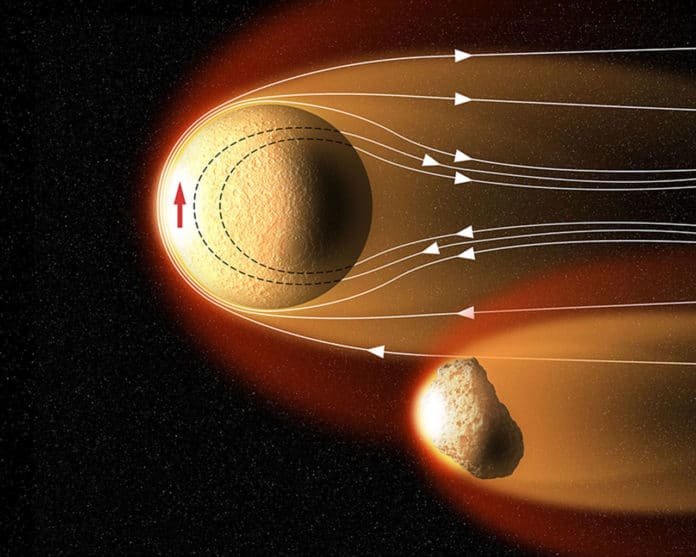Using magnetism, scientists from the University of Rochester determined, for the first time, when carbonaceous chondrite asteroids first arrived in the inner solar system. The carbonaceous chondrite asteroids are enriched in water and amino acids.
This analysis offers valuable insights on data that help inform scientists about the early origins of the solar system and why some planets, such as Earth, became habitable and could sustain life conditions, while other planets, such as Mars, did not.
John Tarduno, the William R. Kenan, Jr., Professor in the Department of Earth and Environmental Sciences and dean of research for Arts, Sciences & Engineering at Rochester said, “There is special interest in defining this history—about the huge number of exoplanet discoveries—to deduce whether events might have been similar or different in exo-solar systems. This is another component of the search for other habitable planets.”
Studying the magnetization of meteorites can offer a better idea of when the objects formed and where they were located early in the solar system’s history.
Tarduno said, “We realized several years ago that we could use the magnetism of meteorites derived from asteroids to determine how far these meteorites were from the sun when their magnetic minerals formed.”
Scientists studied magnetic data gathered from the Allende meteorite, which fell to Earth and landed in Mexico in 1969. The Allende meteorite is the largest carbonaceous chondrite meteorite found on Earth. It contains minerals—calcium-aluminum inclusions—thought to be the first solids formed in the solar system.
To determine when the objects formed and where they were located, scientists initially addressed a paradox about meteorites confounding the scientific community: how did the meteorites gain magnetization?
Rochester graduate student Tim O’Brien, the first author of the paper, found that magnetic signals interpreted by prior scientists were not actually from a core. Instead, the magnetism is a property of Allende’s unusual magnetic minerals.
Having solved this paradox, O’Brien was able to identify meteorites with other minerals that could faithfully record early solar system magnetizations.
This work was later combined with theoretical work from Eric Blackman, a professor of physics and astronomy, and computer simulations led by graduate student Atma Anand and Jonathan Carroll-Nellenback, a computational scientist at Rochester’s Laboratory for Laser Energetics. These simulations showed that solar winds draped around early solar system bodies, and it was this solar wind magnetized the bodies.
Using these simulations and data, scientists determined that the parent asteroids from which carbonaceous chondrite meteorites broke off arrived in the Asteroid Belt from the outer solar system about 4,562 million years ago, within the first five million years of solar system history.
Tarduno says the analyses and modeling offer more support for the so-called grand tack theory of Jupiter‘s motion. While scientists once thought planets and other planetary bodies formed from dust and gas in an orderly distance from the sun, today scientists realize that the gravitational forces associated with giant planets—such as Jupiter and Saturn—can drive the formation and migration of planetary bodies and asteroids. The grand tack theory suggests that asteroids were separated by the gravitational forces of the giant planet Jupiter, whose subsequent migration then mixed the two asteroid groups.
Journal Reference:
- O’Brien, T., Tarduno, J.A., Anand, A. et al. Arrival and magnetization of carbonaceous chondrites in the asteroid belt before 4562 million years ago. Commun Earth Environ 1, 54 (2020). DOI: 10.1038/s43247-020-00055-w
